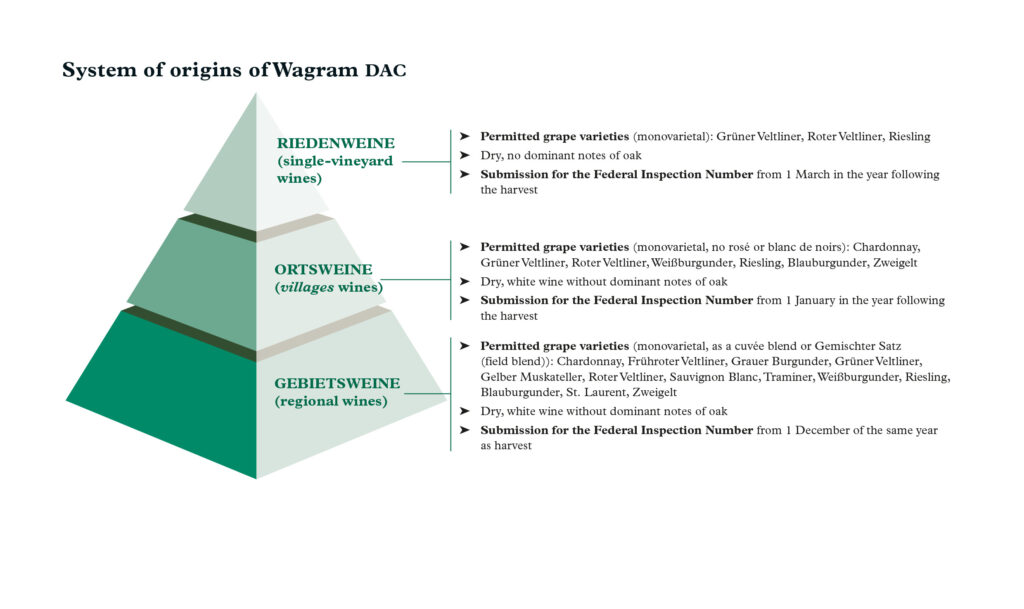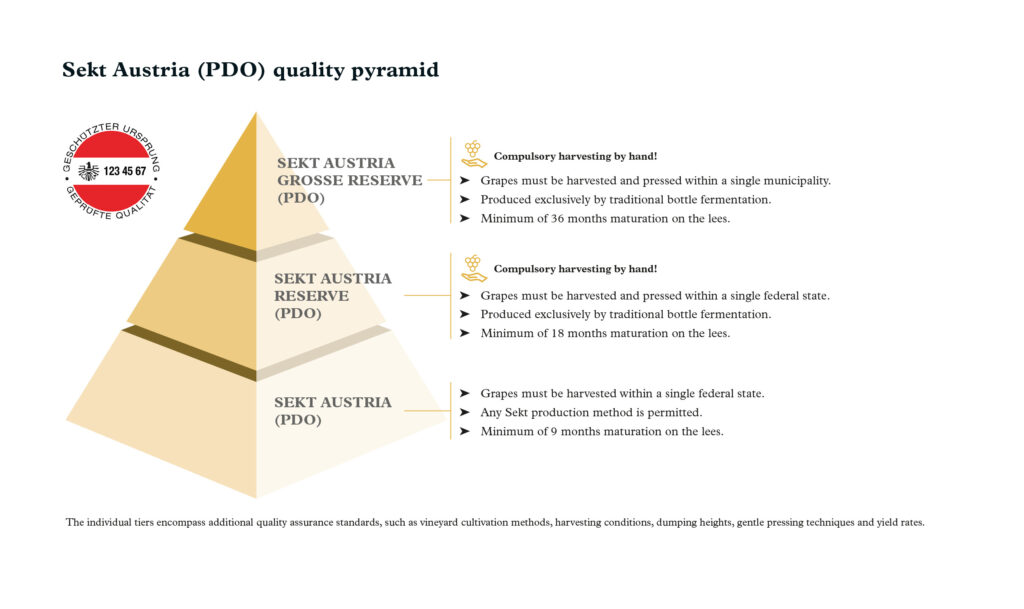According to the latest Press Release by Austrian Wine Marketing Board (AWMB) Wagram has become the 17th wine-growing region in Austria with the protected DAC (Districtus Austriae Controllatus) designation for wines with regional typicity. The status has been defined in a collective amendment to the Austrian Wine Laws that also defines nine legally defined Ortswein (villages wines) for the Kremstal region and the hither-to-fore Sekt g.U. (PDO) now named as Sekt Austria (PDO).

Three Levels of Wagram DAC: Gebietswein, Ortswein & Riedenwein
A draft DAC by the Wagram region has now been signed by the Austrian Minister of Agriculture, Sustainability and Tourism, Elisabeth Köstinger. This makes the Wagram DAC the seventeenth Protected Designation of Origin (PDO)of its type in Austria. Much like other regions before it, Wagram has decided to subdivide its DAC wines into three categories- Gebietswein (regional wine), Ortswein (villages wine) and Riedenwein (single-vineyard wine).

At the Gebietswein level, the traditional range of 13 permitted grape varieties is retained, including both white and red varieties. Gemischter Satz (field blend) and cuvée blends are also allowed.
With regard to Ortswein, the DAC decree establishes 27 protected designations of origin. The number of permitted grape varieties is reduced down to just seven. These wines must be monovarietal.
The pinnacle of the origins pyramid is represented by Riedenwein, namely wines from a single, legally defined vineyard. The flagship white varieties of the Wagram region, Grüner and Roter Veltliner, are permitted for these wines, as is Riesling.
All the above-classified wines must correspond to the definition of “dry” wine, and the whites must under no circumstances have a dominant woody note. The decree applies to wines from the 2021 vintage onwards.
This was not an easy nut for the winemakers of the Wagram region to crack, but after comprehensive discussions and much thought, the Wagram region is now able to join the DAC. We will now pursue the successful route of origin marketing together.
– CHRIS YORKE, CEO OF AUSTRIAN WINE (AUSTRIAN WINE MARKETING BOARD)
Sekt g.U. (PDO) replaced by Sekt Austria (PDO)
The collective amendment also ushers in a significant change for Austria’s sparkling wines. From now on, Sekt with a protected designation of origin Sekt g.U. (PDO) can only be sold in conjunction with the terms Sekt Austria (PDO), Sekt Austria Reserve (PDO) or Sekt Austria Große Reserve (PDO).

The aim of this move is to ensure that the 100% Austrian origins of these Sekts (grapes from Austria made into Sekt in Austria) is communicated more clearly. Austrian Sekt is easily identified by the red-white-red banderole on the top of the bottle.
Strict regulations apply to Sekt Austria (PDO), based on those governing the best sparkling wines in the world. The various categories must be aged on the lees as follows:
- Sekt Austria (PDO) – minimum 9 months.
- Sekt Reserve- minimum 18 months.
- Sekt Große Reserve,- minimum 36 months (replacing the previous 30).
The following additional parameters are applicable to Austrian Sekt:
- Compulsory hand-picking of grapes for the Reserve and Große Reserve Setks.
- While the grapes used for Sekt Austria(PDO) and Sekt Austria Reserve (PDO) must come from a single federal state, those for the Große Reserve must be harvested within a single
- Municipality. Single-vineyard Sekts are also possible in this class.
Nine legally defined origins for Ortswein in Kremstal
The collective amendment also contains an update to the DAC decree for the Kremstal. At the Ortswein (villages wine) level, the following nine origins allowed on the label have now been legally defined:
- Krems
- Stein,
- Rohrendorf
- Gedersdorf
- Stratzing
- Senftenberg
- Furth
- Höbenbach
- Krustetten.
(Adapted from an original Press Release by the Austrian Wine Marketing Board)








